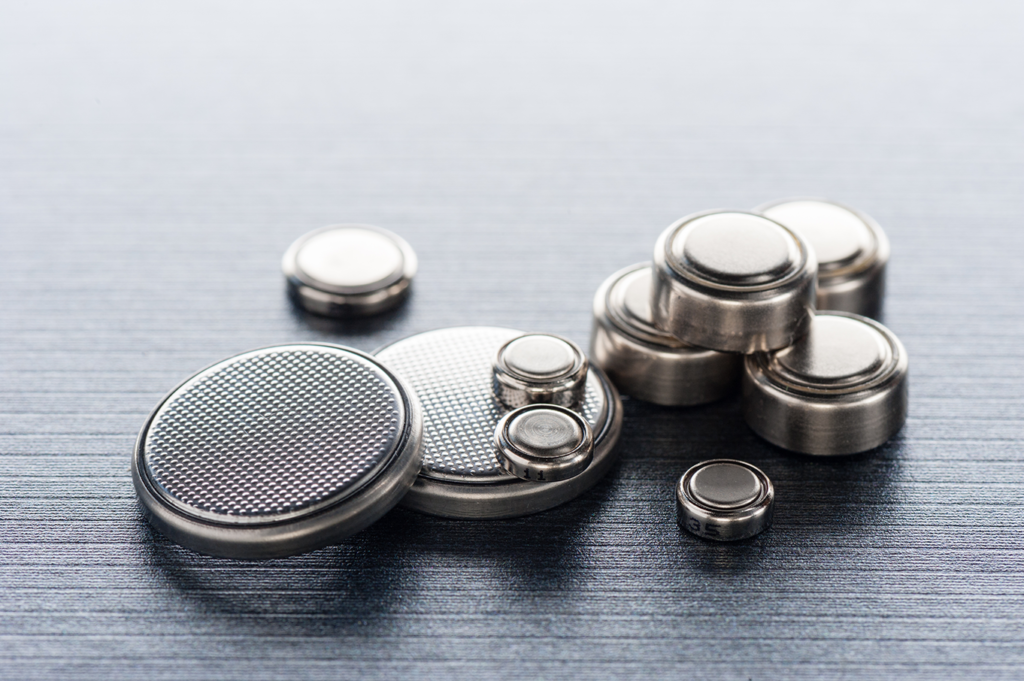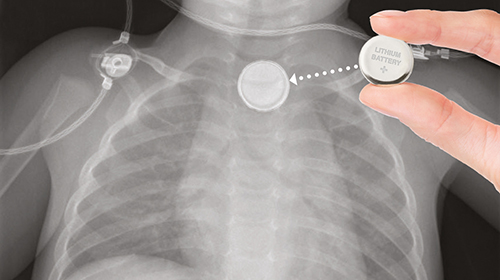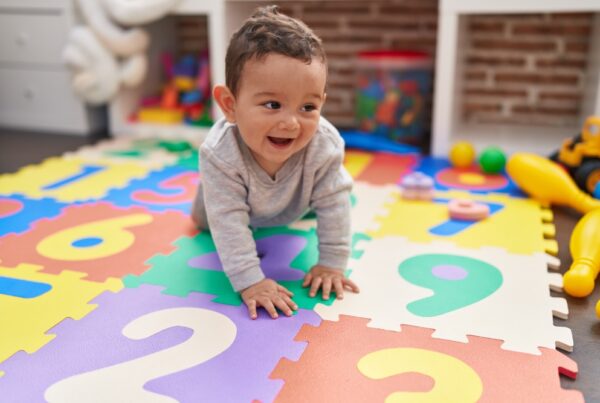In Australia, more than one child every month sustains a time-critical or severe injury related to swallowing or inserting (into nose or ears) a button battery, with children under the age of five being at greatest risk. However there have been cases involving children up to the age of 12.

Every year on the last day of Summer (Feb 28), Kidsafe highlight a different causal factor for accidental child injury or death, but due to a further two children dying as a result of swallowing a button battery, this year is again being dedicated to button battery awareness.
Babies and toddlers tend to put things in their mouths, and button batteries are appealing to young children as they are small and reflective. The tiny batteries pose a severe injury risk however, with young children being at the greatest risk due to their narrower oesophagus and inability to be able to tell anyone what they have done. Unfortunately, symptoms can mimic common childhood conditions, with vomiting, drooling and cough.
If swallowed, the coin-sized batteries can lodge in a child’s throat or stomach. An electrical current is immediately triggered by saliva, which causes a chemical reaction that can cause severe burns to the child’s oesophagus and internal organs such as vital arteries, lungs, heart, larynx and spine. Serious injury can occur in as little as two hours and the results can be fatal.
Once burning begins, damage can continue even after the battery is removed from the body and repairing the damage can be painful and may require multiple surgeries over many years.
Oddly enough, many children’s toys are powered by or use button batteries to produce light and sound effects, including plush toys, toy cars, digital pets, early learning watches, light-up yo-yos, games, novelty items and even singing Santas. They are also used in a broad range of consumer and household products including remote controls, watches, computers, cameras, calculators, torches, flameless candles, fitness devices, digital kitchen and bathroom scales, musical greeting cards and home medical devices.

Often, parents don’t realise an item contains a button battery as the batteries are usually already installed, but if buying a toy, household device or novelty item, parents should look for products that do not use button batteries at all.
Look for products that are powered by other types of batteries which are less likely to be swallowed by young children and do not present the same degree of danger if they are, or alternatively, look for products where the battery does not need to be replaced, such as where the product is rechargeable.
If one does buy button-battery-operated products, look for ones with a child-resistant battery compartment. This will make it much more difficult for a young child to access the battery and buy new button batteries in child-resistant packaging – that is, the packaging needs to be opened with scissors.
Parents should take full responsibility when changing and discarding batteries and don’t leave new batteries or the flat batteries within reach of children. Flat or ‘dead’ batteries still contain enough charge to generate an electrical current once ingested – with fatal consequences.
Prompt action is critical. Do not wait for symptoms to develop.
Button battery injuries can be catastrophic if not treated immediately so if you think a button battery has been swallowed, do not wait for symptoms to appear before calling an ambulance.
Remember, children are often unable to effectively communicate that they have swallowed or inserted a button battery. Symptoms to watch out for include:
- Gagging or choking
- Drooling
- Chest pain (this may present as grunting)
- Coughing or noisy breathing
- Unexplained vomiting or food refusal
- Bleeding from the gut — black or red vomit or bowel motions
- Nose bleeds — sometimes this can be blood vomited through the nose
- Unexplained fever
- Abdominal pain
- Spitting blood or blood-stained saliva
- Bloody discharge from ear or nose.
There may, however, be none of the above symptoms. If you even suspect a child has swallowed or inserted a button battery, call an ambulance (000 in Australia) or go to the nearest hospital emergency department immediately and ask for an X-ray to make sure.


Disposing of batteries
Rather than throwing batteries into the rubbish bin, take used batteries to the local recycling collection point – this will prevent children having access to batteries and accidentally finding them once they have been discarded. You can recycle batteries at the following places:
- Your local council (council websites often list additional disposal points)
- Planet Ark
- Aldi supermarkets
- BatteryWorld
Summer’s Day
Summer’s Day is named in memory of Summer Steer, a little girl who lost her life after swallowing a coin/button battery that burned through her oesophagus and into her aorta.
Summer represents the 75 Queensland children who die each year from unintentional, preventable injuries and the 90,000 Queensland children who attend emergency departments or are admitted to hospital each year.
Learn more about Summer in the video below.









